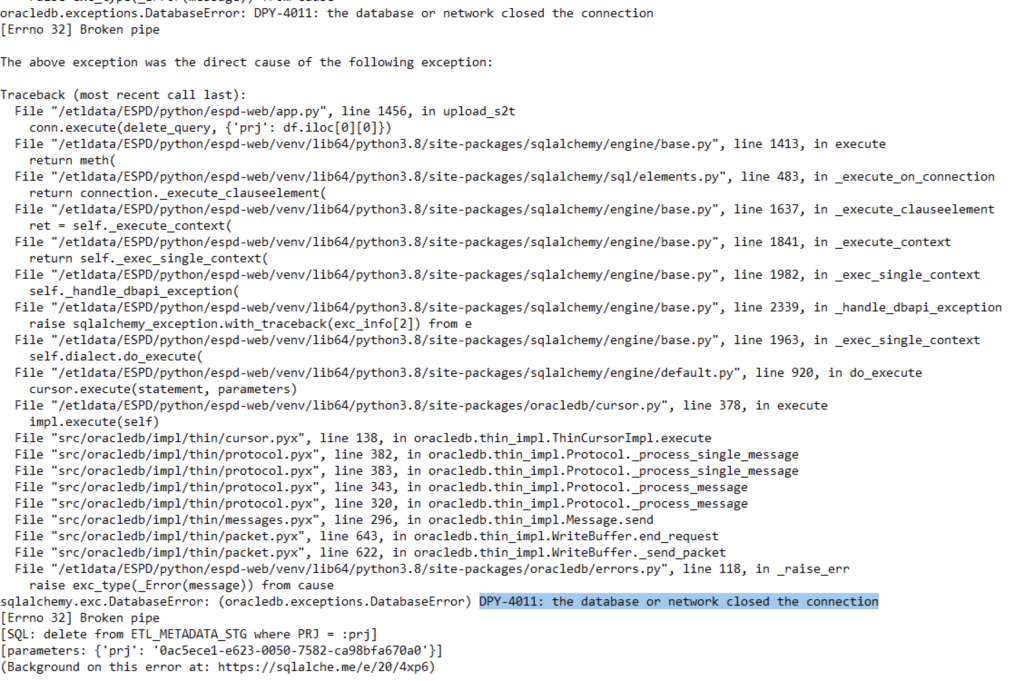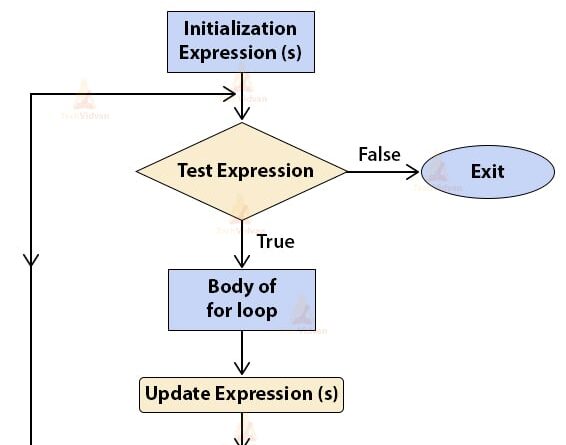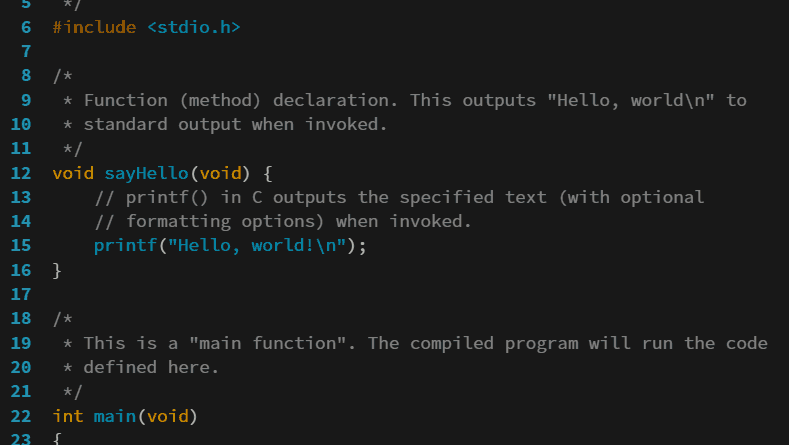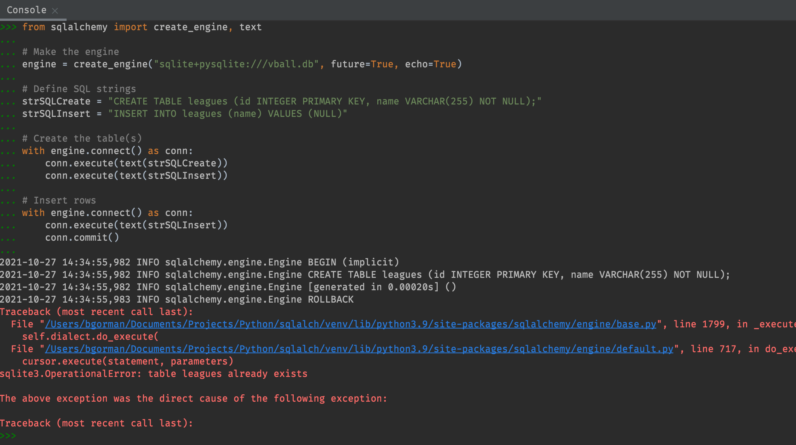
In this article, you will learn how to close create engine in SQLAlchemy. SQLAlchemy is a powerful and flexible Python library for working with databases. By the end of this article, you will have a clear understanding of the steps required to properly close the connection engines in SQLAlchemy, ensuring efficient and reliable database operations.
Closing the connection engine in SQLAlchemy is a crucial step in managing your database connections. By closing the connection engine, you can free up valuable resources and ensure that your application runs smoothly. In this article, we will walk you through the process of closing the connection engine in SQLAlchemy, providing you with a hassle-free experience and enhancing the performance of your database operations. So let’s get started and make sure that your SQLAlchemy connection engines are closed properly!
Table of Contents
Closing Connection Engines in SQLAlchemy
Introduction to SQLAlchemy
SQLAlchemy is a popular Object Relational Mapping (ORM) library for Python that provides a high-level interface to databases. With SQLAlchemy, developers can interact with databases using Python code instead of writing raw SQL queries. One of the core components in SQLAlchemy is the Connection Engine, which is responsible for connecting to and interacting with the database.
Creating a Connection Engine
To establish a connection to a database using SQLAlchemy, you need to create a Connection Engine. The Engine acts as a source of connectivity and manages the underlying connections to the database. It provides a common entry point for executing SQL statements and managing transactions.
Creating a Connection Engine in SQLAlchemy is as simple as using the create_engine() function from the sqlalchemy module. You pass the connection string to the function, specifying the database dialect and connection details. For example, to connect to a PostgreSQL database running locally, you would write:
from sqlalchemy import create_engine engine = create_engine('postgresql://username:password@localhost/dbname') 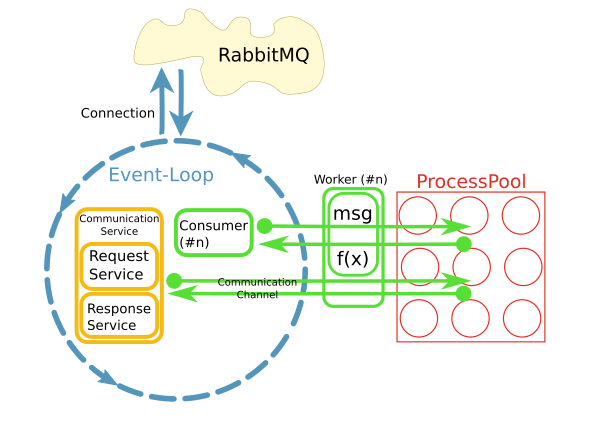
Closing a Connection Engine
While it is important to establish a connection to a database, it is equally important to close it properly once you are done using it. Closing a Connection Engine releases any resources associated with it, such as database connections and network connections. Failing to close a Connection Engine can lead to resource leaks and may result in performance issues or even errors.
In SQLAlchemy, you can close a Connection Engine by calling the dispose() method on the engine object. This method releases any acquired resources and closes all database connections. For example, to close the previously created engine, you would write:
engine.dispose() Reasons for Closing a Connection Engine
There are several reasons why you should always close a Connection Engine in SQLAlchemy:
-
Resource Management: Closing a Connection Engine ensures that resources are released properly. By closing the engine, you avoid holding onto database connections that are not being used, freeing up resources for other parts of your application.
-
Performance Optimization: Closing a Connection Engine can improve the performance of your application. By releasing resources promptly, you reduce the overhead associated with maintaining database connections, leading to faster execution and better scalability.
-
Consistent State: Closing a Connection Engine helps to maintain a consistent state in your application. By closing the engine at the end of a session or when the connection is no longer needed, you avoid potential conflicts or inconsistencies caused by holding onto stale connections.
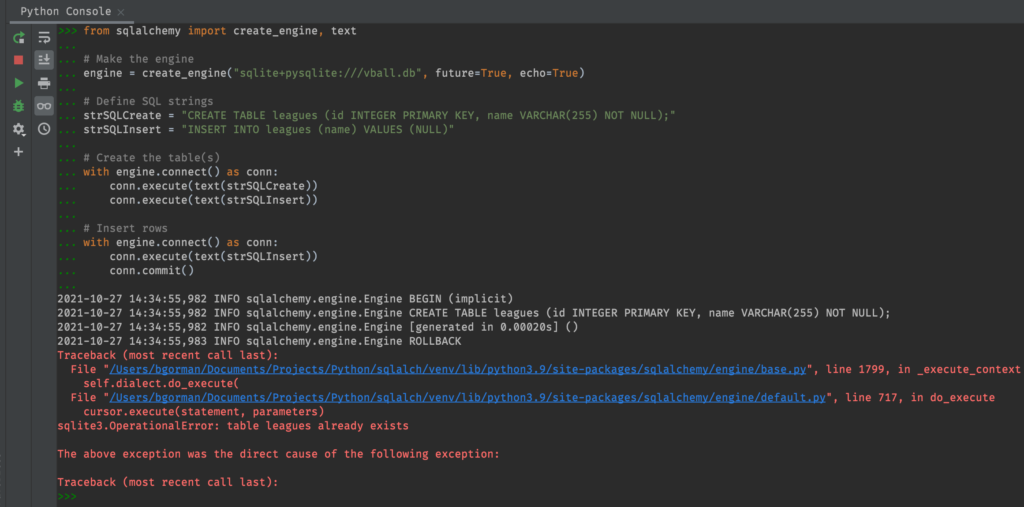
Step-by-Step Process of Closing a Connection Engine
To ensure proper closure of a Connection Engine in SQLAlchemy, you can follow these steps:
-
Finish Your Database Operations: Before closing the engine, make sure that you have finished all the necessary database operations. This includes committing or rolling back any pending transactions and closing any open sessions.
-
Call the
dispose()Method: Once you have finished your database operations, call thedispose()method on the engine object. This will release any acquired resources and close all database connections. -
Verify Closure: After calling the
dispose()method, verify that the engine is closed by checking itsis_closedattribute. If it returnsTrue, then you can be sure that the engine has been closed successfully.
Proposal for Automated Engine Closure
Closing a Connection Engine manually can be a tedious and error-prone process, especially in large applications with multiple database connections. To simplify this process, a proposal for automated engine closure is to use context managers. Context managers provide a convenient way to manage resources and guarantee that they are properly cleaned up when they are no longer needed.
With context managers, you can define a block of code that encapsulates the usage of a Connection Engine. Once the block of code is executed, the context manager automatically closes the engine, ensuring that all resources are released. Here is an example of using a context manager to automatically close a Connection Engine:
from sqlalchemy import create_engine from contextlib import contextmanager @contextmanager def engine_context(): engine = create_engine('postgresql://username:password@localhost/dbname') try: yield engine finally: engine.dispose() # Usage with engine_context() as engine: # Perform database operations using the engine In the above example, the engine_context() function is defined as a context manager using the @contextmanager decorator from the contextlib module. Inside the context manager, the engine is created and yielded to the user. Once the block of code is executed, the finally block is executed, ensuring that the engine is closed by calling the dispose() method.

Potential Challenges and Limitations
While closing a Connection Engine is generally recommended, there are a few challenges and limitations to consider:
-
Connection Pooling: Closing a Connection Engine does not necessarily mean closing all the connections immediately. SQLAlchemy uses connection pooling by default, where connections are reused instead of being closed. This means that even after closing the engine, the connections may still be alive until their respective idle timeout is reached.
-
Long-Running Sessions: If you have long-running database sessions that span multiple operations, it may not be feasible to close and reopen the engine every time. In such cases, you should consider managing the lifecycle of the engine based on the scope and requirements of your application.
Benefits of Closing Connection Engines
Despite the challenges and limitations, there are several benefits to closing Connection Engines in SQLAlchemy:
-
Resource Optimization: By closing the engine when it is no longer needed, you ensure that database connections are released promptly, minimizing the resource consumption of your application.
-
Preventing Leaks: Closing the engine helps to prevent resource leaks and avoids potential issues like “Too many connections” or “Out of memory” errors.
-
Clearing Session State: Closing the engine resets the session state and any associated transaction state, ensuring a clean and consistent state for future operations.
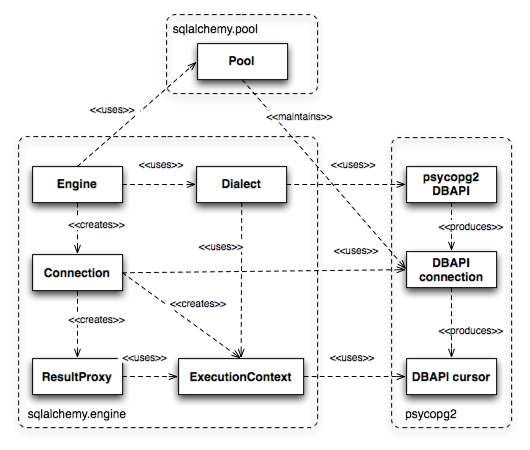
Alternatives to Closing Connection Engines
If manually closing Connection Engines is not practical or desirable in your application, you can consider other strategies to manage the lifecycle of the engines:
-
Connection Pooling Configuration: Adjust the connection pooling settings in SQLAlchemy to control the behavior of the connections. For example, you can set a lower idle timeout value to close idle connections more aggressively.
-
Lazy Initialization: Instead of creating the engine at the start of your application, you can lazy-initialize it when the first database operation is performed. This ensures that the engine is only created when needed and disposed of at the end.
-
Connection Pool Recycling: Use SQLAlchemy’s connection pool recycling feature to automatically close and reopen connections after a certain period or number of connections. This helps to avoid connections becoming stale or consuming excessive resources.
Conclusion
Closing Connection Engines in SQLAlchemy is an essential aspect of managing database connections and ensuring optimal performance. By following the step-by-step process of closing the engine and considering automated closure approaches, you can streamline the resource management of your application. While there may be challenges and limitations, the benefits of closing Connection Engines outweigh the potential drawbacks, leading to a more efficient and reliable database interaction experience.
